This study was taken on, to find out the best way to remove the flesh of the agbalumo for preservation and processing.
Typically, after a thorough washing, I press the top sides of my agbalumo around the stalk in to ‘break the fruit’. Out seeps a creamy sweet and tart juice that is rapidly licked. One drop on your whites though – like cashew juice – and you’ll have a stain you cannot remove… for life.
Today, however, my objective is different. I leave the stalk in and proceed to investigating the decimation.
The Skin
I begin with a vegetable peeler but I find myself cutting into the fruit which is not the plan. Take two sees me digging my fingers into the stalk region to catch the skin. I pull it back with a teeny bit of effort. It comes cleanly off the flesh, with bursts of creamy juice and some stretching of latex.
This skin, a millimetre or so thick is full of latex with the potential to ‘turn’ to chewing gum if chewed for a long time. Why nobody has ever fashioned Agbalumo chewing gum into a thing is beyond me. I said it first. Patent alarm 🙂
I continue to tear off bits of skin from top to bottom. The skin comes off in 4, 5 large strips with tapering ends, tribute to its ovoid shape. This is easy with ripe fruit.
With harder, not very ripe/ soft fruit, I employ the services of a table knife, using that as the tug instead of fingers which are soft and blunt. Sometimes, I scrape off the skin with the knife when the going gets tough.
Uses – chewing gum :), drinks – made of the entire fruit or skin and seeds.
The Flesh
The flesh varies in colour with a predominant orange-red hue. It is streaked, suggesting a fibrous quality. It is meaty but not stringy, like some varieties of mangoes.
At first, you might think the stalk holds the flesh…but no, it doesn’t. The flesh, wrapped around the skin and about 3 – 4 millimetres thick also comes off in segments. The flesh fills in the concave spaces between the peaks of the seeds. The edge of each segment sits along the ‘star’ edge of the seeds.
The flesh comes off easily in 4 – 5 bits, which are a delight to chew on, if somewhat tart.
Uses – can be processed into puree and used in a variety of ways from curd to fruit leather.
The Seeds
The way the seeds cluster around the stalk might be the very reason for the name ‘White Star Apple’. The somewhat bean-shaped seeds are blanketed with creamy pulp and take a star formation which can only be observed when stripped this way. They aren’t edible and are often used to play games.
The pulp cloaks shiny brown seeds and is torn off by prising the pulp lose from the ‘eye’ of the seed.
Uses – The seeds are strung to make anklets for traditional ‘dancing’, and children play a game with them
The Stalk
The stalk sits in prime position – at the entry point to the rest of the Agbalumo. Growing up, I always favoured buying the Agbalumo missing the stalk. They were sweeter…but I didn’t know why. Now that I think about it, being stalkless might be an indication of ripeness, thus fitness for plucking. This isn’t to say that the stalked ones are less sweet – I’ve had a few that aren’t, but it signals readiness to me.
The stalk and the ‘cap’ at its base remind me of the larger ones on Mangosteens and I wonder if they are related to Agbalumo.
These days, I’m wary about buying the stalkless because of hygiene issues. Occasionally, I buy both.
The stalk is the centre around which the seeds cluster, in star formation.
Uses – I suspect, like chili heads, it might add some flavour to brews…I tend to lick it clean and discard.
So there you have it. If you want the flesh of agbalumo, the best way is to hand peel the skin – minimal loss.
What other ways do you think agbalumo in all its parts could be used?

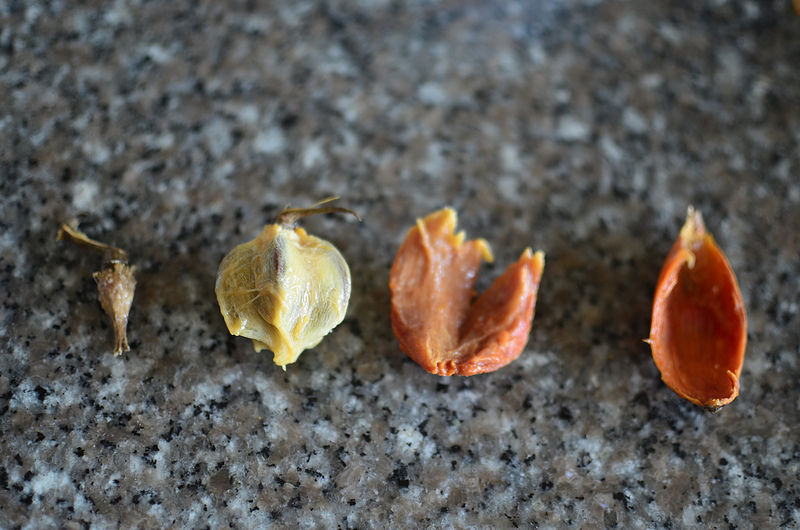
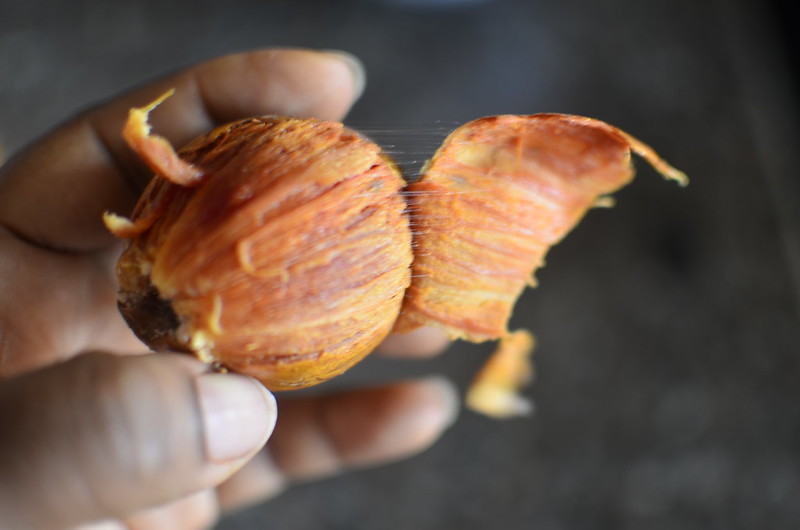

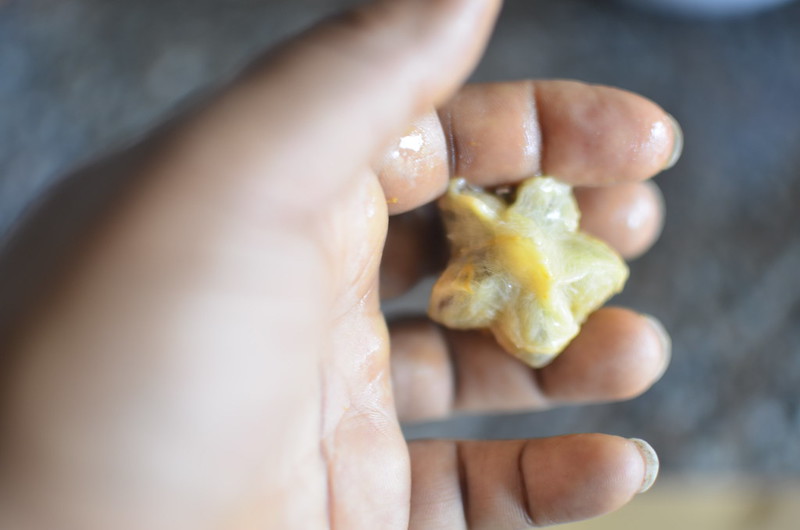
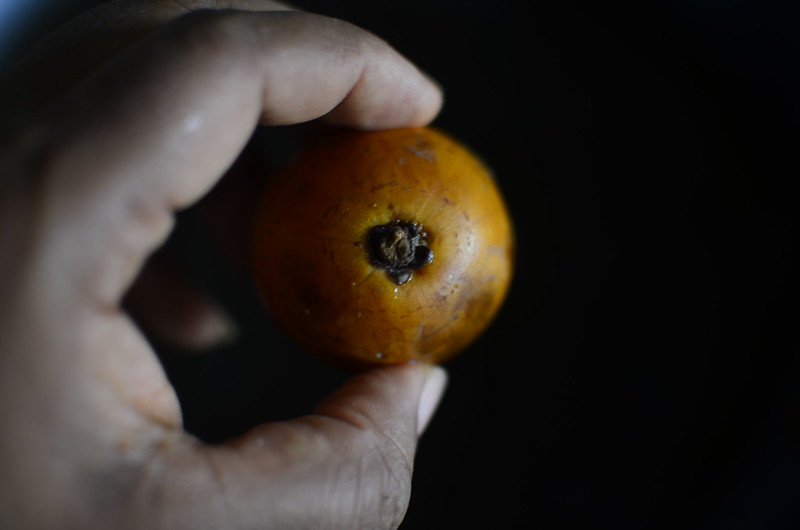
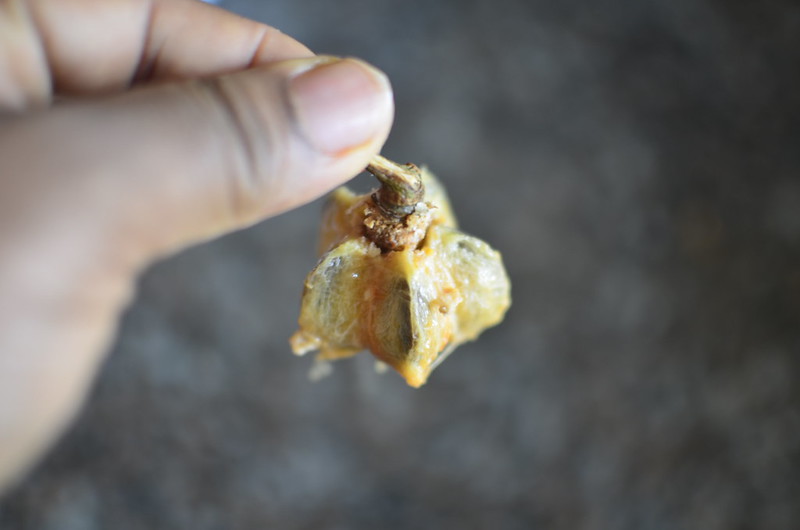
Leave a Reply